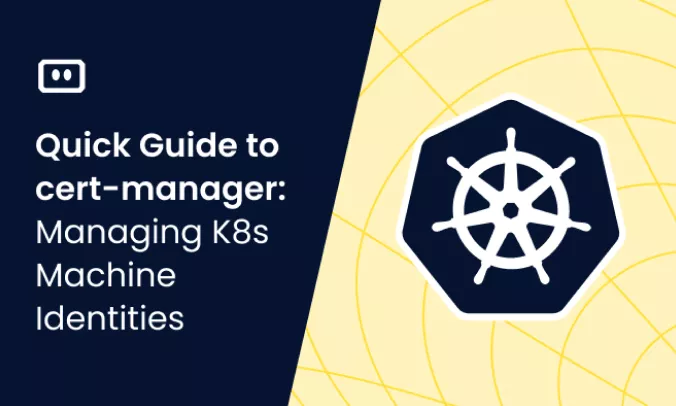What Is AWS EKS?
Amazon Elastic Kubernetes Service (EKS) is a managed service that makes it easier to run Kubernetes on AWS and on-premises. Kubernetes is an open-source system for automating the deployment, scaling, and management of containerized applications. Amazon EKS automatically manages the Kubernetes control plane for you, which includes the API servers and the etcd database where cluster data is stored.
Running Kubernetes as a managed service reduces the complexity of the Kubernetes environment, automating cluster setup, administrative tasks, and ensuring the underlying infrastructure is always up to date. EKS provides three options for provisioning Kubernetes cluster nodes—Elastic Compute Cloud (EC2) instances, Fargate (Amazon’s serverless compute service), and Outposts (specialized hardware that runs AWS resources on-premises).
This is part of a series of articles about Kubernetes cost optimization
How Does AWS EKS Pricing Work?
In AWS EKS, you pay for AWS resources, such as EC2 instances or EBS volumes, which you provision to run your Kubernetes nodes. You are charged for each hour or partial hour you run each Amazon EKS cluster. Below we explore in more detail how EKS pricing works when deploying Kubernetes nodes on Amazon EC2, Fargate, or Outposts.
Note: Amazon EKS supports each Kubernetes version for the first 14 months after its release. After that, if you aren’t able to upgrade, you can continue using the Kubernetes version for another 12 months under “extended support”. There is a significant charge for extended support, with the cluster fee rising to $0.60 per cluster per hour.
Amazon EKS Pricing with Amazon EC2
EC2, or Elastic Compute Cloud, is one of the most popular services provided by AWS. It offers secure, resizable compute capacity in the cloud. EKS lets you run Kubernetes nodes on Amazon EC2 instances.
When it comes to Amazon EKS pricing with Amazon EC2, you pay $0.10 per hour for each Amazon EKS cluster that you create. You can use a single Amazon EKS cluster to run multiple applications by taking advantage of Kubernetes namespaces and IAM security policies. In addition to the cluster management fee, you will also pay for the EC2 instances and other resources, such as EBS volumes, used by your applications.
For example, if you run a cluster for a month (730 hours) with two m5.large instances in the US East (N. Virginia) region, the total cost would be the cost of the EKS cluster plus the cost of the EC2 instances. That would be $73 for the EKS cluster (730 hours * $0.10 per hour) and around $70.08 for the EC2 instances ($0.096 per hour).
Amazon EKS Pricing on AWS Fargate
Fargate is a serverless compute engine for containers that works with both Amazon Elastic Container Service (ECS) and Amazon Elastic Kubernetes Service (EKS). AWS Fargate removes the need to provision and manage servers, lets you specify and pay for resources per application, and improves security through application isolation by design.
With Amazon EKS on AWS Fargate, you pay the $0.10 per hour cluster management fee, and in addition pay only for the vCPU and memory resources that your pod needs to run. This allows you to precisely measure and manage your costs. Fargate resources are billed per second and have a 1-minute minimum.
For instance, if you run a pod with 1 vCPU (Linux/x86 architecture) and 2GB of memory for a full month in the US East (N. Virginia) region, it would cost approximately $29.50 for compute (vCPU) and $6.46 for memory, totaling $35.96.
Amazon EKS Pricing on AWS Outposts
AWS Outposts is a fully managed service that extends AWS infrastructure, AWS services, APIs, and tools to virtually any data center, co-location space, or on-premises facility. It allows you to run AWS services, such as EKS an EC2, within your on-premises data center.
The pricing for running Amazon EKS on AWS Outposts varies depending on the Outpost configuration you have. You pay for the Outpost capacity that you have ordered irrespective of how you utilize it. In addition to the Outpost capacity costs, there’s a separate charge for EKS, which is $0.10 per hour per EKS cluster, similar to running EKS in the cloud.
For example, if you run a cluster for a month (730 hours) on Outposts, the cost for the EKS part would be $73 (730 hours * $0.10 per hour). The cost for the Outpost capacity would depend on your specific configuration.
6 Ways to Optimize AWS EKS Costs
1. Evaluate Instance Size and Type
Optimizing your AWS EKS pricing starts with evaluating the size and type of instances you need based on your applications’ requirements. Choosing the right instance types and sizes for your worker nodes is crucial. You should assess your workloads to determine the compute, memory, and storage needs and select the instance types that best match these requirements.
Avoid over-provisioning resources to prevent unnecessary costs. AWS offers a variety of EC2 instance types that are optimized for different workloads, such as compute-optimized, memory-optimized, and storage-optimized instances. As an alternative, use Amazon Fargate, which bills according to actual resources used by your pods.
Read the detailed guide to AWS cost optimization
2. Use Amazon EKS Managed Node Groups
Amazon EKS Managed Node Groups simplify the process of managing worker nodes. These groups automatically adjust the number of nodes in your cluster to meet your application’s needs, ensuring that you have the right amount of resources to handle your workload without over-provisioning.
This feature helps optimize costs by scaling down resources during low-traffic periods and scaling up during peak times. Managed Node Groups also handle updates and patches for your nodes, ensuring your environment is secure and efficient.
3. Consider Reserved Instances or Savings Plans
For workloads with predictable usage patterns, purchasing Reserved Instances or Savings Plans can offer significant cost savings over on-demand pricing. Reserved Instances allow you to commit to a specific instance type and size for a 1-year or 3-year term, offering a lower hourly rate compared to on-demand instances.
Similarly, AWS Savings Plans provide a flexible way to save on compute usage across EC2, Fargate, and Lambda, in exchange for a commitment to a consistent amount of usage (measured in $/hour) for a 1-year or 3-year term. Both options can lead to cost reductions of up to 72% compared to on-demand rates.
Learn more in our detailed guide to Kubernetes cost reduction.
4. Leverage AWS Spot Instances for Stateless/Fault-Tolerant Workloads
AWS Spot Instances let you take advantage of unused EC2 capacity at a significant discount compared to on-demand prices. Spot instances are primarily suited for stateless and fault-tolerant workloads, because they can be interrupted by AWS with only two minutes’ notice.
By integrating Spot Instances into your EKS clusters, you can reduce compute costs for suitable workloads by up to 90%. It’s important to implement strategies to manage interruptions, such as using Spot Fleet or the Kubernetes Cluster Autoscaler to maintain your application’s availability and performance.
5. Set Up AWS Budgets to Receive Alerts on Excess Spending
AWS Budgets allows you to set custom budget thresholds and receive alerts when your costs or usage exceed these thresholds. This tool is essential for managing your AWS spending effectively.
By setting up budgets for your EKS clusters, you can monitor your expenses in real time and adjust your resources accordingly to avoid unexpected charges. Alerts can be configured to notify teams via email or SMS, enabling proactive cost management and optimization.
6. Leverage Kubernetes Cost Management Tools
Several Kubernetes cost management tools are available to help you understand and optimize your cluster costs. These tools provide visibility into your Kubernetes spending, breaking down costs by namespace, service, and label.
By identifying high-cost resources and potential inefficiencies, you can make informed decisions to optimize your cluster configuration and reduce expenses. Tools such as AWS CloudWatch Container Insights for Kubernetes offer detailed insights and recommendations for cost optimization within your EKS environment.
Kubernetes Cost Optimization with Komodor
Komodor’s cost optimization suite ensures visibility, optimization and responsible Kubernetes growth without compromising on performance, all from the same Kubernetes platform you know and love.
- Gain Visibility & Allocate Costs Across Your K8s Environment: Keep a close eye on your Kubernetes cost breakdown and monitor resource consumption with ease. By allocating costs based on business units, teams, environments, and applications, you gain a clearer understanding of spending patterns. Analyzing cost trends over time empowers you with valuable insights, enabling you to identify areas for optimization and potential savings. Our user-friendly approach ensures that you can readily comprehend your cost efficiency, making it easier to promote accountability and transparency within your organization.
- Optimize Costs with the Perfect Balance Between Costs & Consumption: Our solution offers a range of powerful features to optimize your resource usage efficiently. By analyzing real-time usage in comparison to requirements, you can ensure optimal resource allocation. Identify and address any missing requests and limits to streamline performance and avoid wastage. Eliminate idle resources that are not contributing to your operations, boosting efficiency. Tailoring optimization strategies to each environment ensures maximum impact. With just one click, you can apply our intelligent recommendations and experience significant time and cost savings, simplifying the process and reducing potential challenges.
- Ensure Reliability by Monitoring the Impact of Your Optimization: Our proactive monitoring system allows you to maintain continuous operations with optimized resources. By actively monitoring your resources, we can promptly identify and flag availability concerns, out-of-memory issues, or CPU throttling, ensuring the smooth functioning of your systems. Receive timely alerts directly to your ticketing and instant messaging applications, keeping you informed of any potential issues. Our integrated approach helps you avoid silos and effortlessly connect performance and cost data in one centralized location, streamlining your management and decision-making processes for improved efficiency.
Learn more about Komodor’s Kubernetes cost optimization capabilities or get started now!


